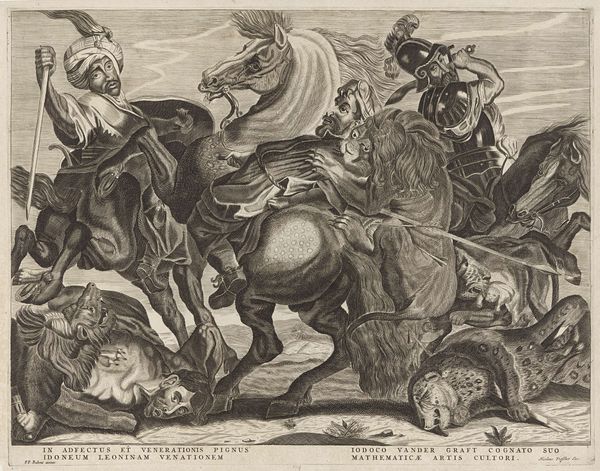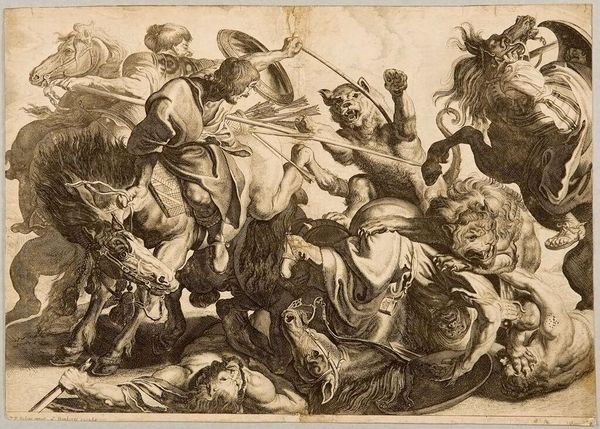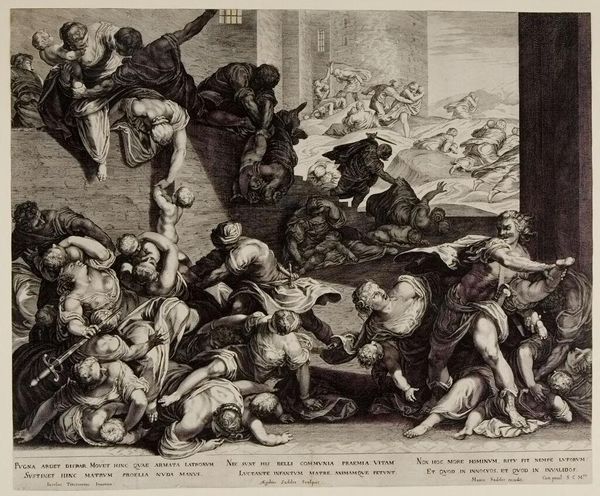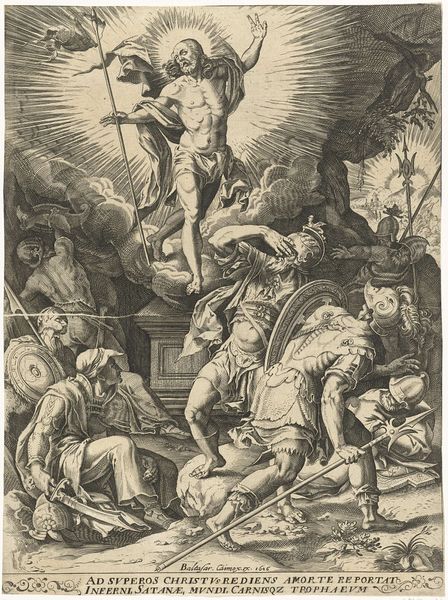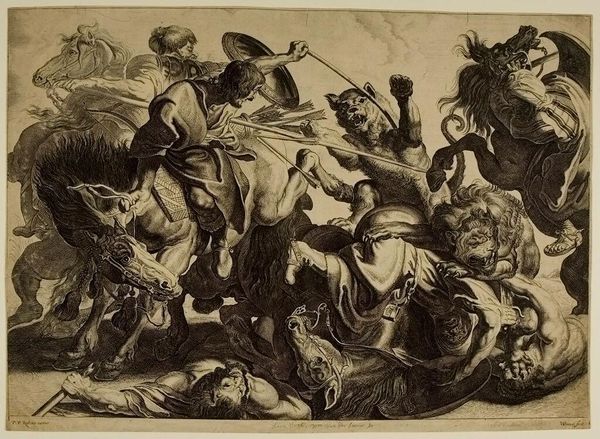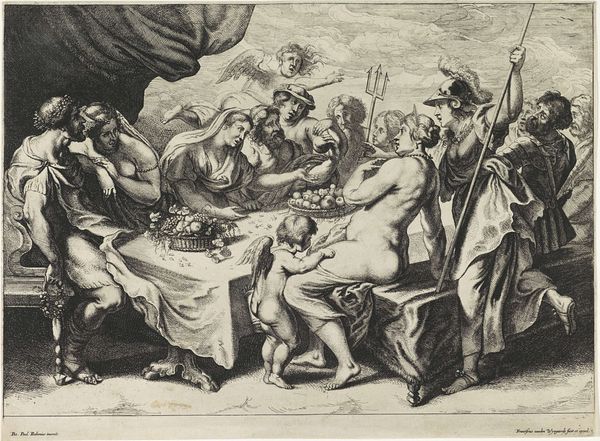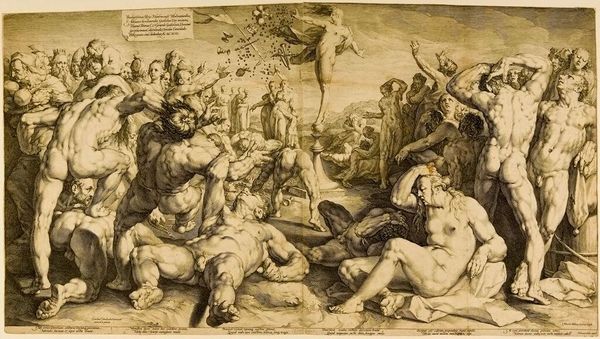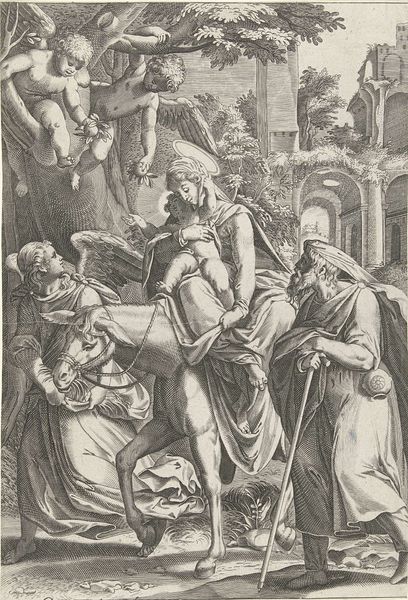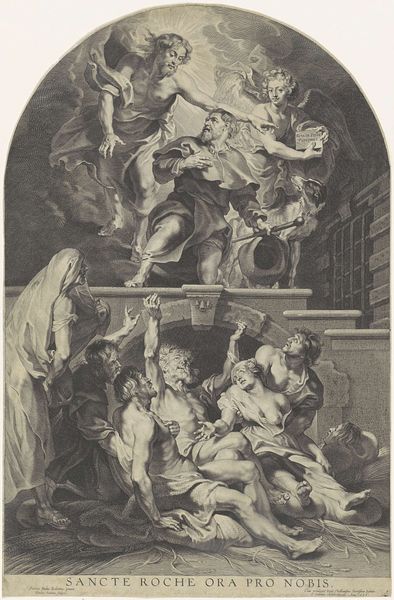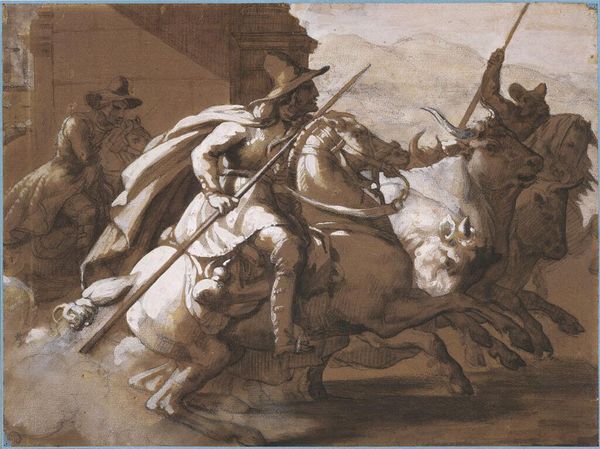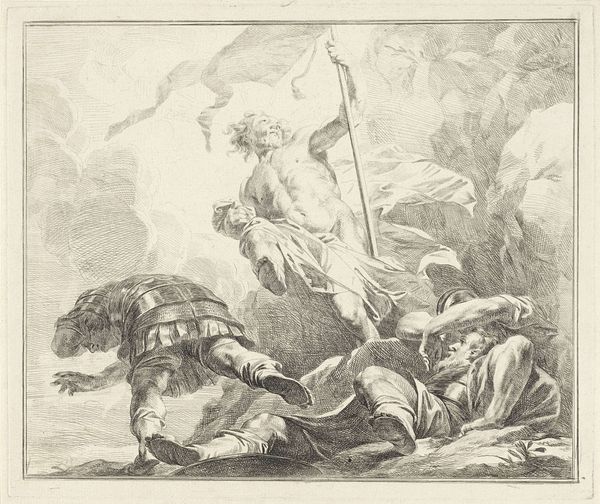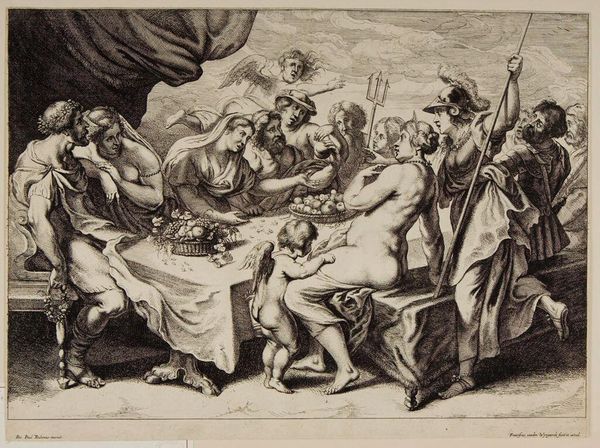
painting, oil-paint
#
venetian-painting
#
painting
#
oil-paint
#
mannerism
#
figuration
#
oil painting
#
history-painting
Dimensions: 450 x 370 cm
Copyright: Public domain
Curator: Looking at Paolo Veronese’s oil painting “Esther Crowned by Ahasuerus,” created around 1556, I am immediately struck by the vibrant coloring, and how he organizes this teeming composition in such a masterful way. Editor: My first impression centers on the materiality. Notice the layered application of paint that suggests opulent textiles. The very making of this painting feels connected to Venetian commerce—pigments sourced through trade, destined for a patron embedded in the social hierarchy. Curator: Indeed, Veronese employs the visual language of Mannerism, evident in the slightly elongated figures and dynamic poses, to tell a compelling story. Think about how the figures direct your eye—Ahasuerus extending the crown to Esther, she with her hand on her chest. It's theatrical! Editor: Absolutely, but let's look closer. The artist, the materials, and the historical setting cannot be divorced. Veronese likely used pigments sourced through long-distance trade networks, like ultramarine made from lapis lazuli—these materials signal wealth and status just as powerfully as the figures depicted. Curator: Good point. The gestures of the figures, the richness of their garments—they communicate not only the narrative but also the wealth and power that support it. See how the brushstrokes themselves add to the textural richness? Editor: And think about labor. While Veronese obviously held a position of prestige, what of his workshop? Assistants grinding pigments, preparing canvases? These invisible hands contribute to the overall impact, adding layers to our understanding of production, patronage, and the value of art itself in that social hierarchy. The materials speak of exploitation and privilege, inextricably linked. Curator: I concede the materiality adds depth to this reading of power relations in 16th-century Venice, though for me the success lies in its visual splendor, drawing the eye around the story with expert technique and theatrical panache. Editor: Perhaps, and through recognizing both its splendor and its origins, we engage more critically with what Venetian painting, at this time, represents socially. We witness a painting but also a mirror to power relationships inherent in its very fabrication.
Comments
No comments
Be the first to comment and join the conversation on the ultimate creative platform.
